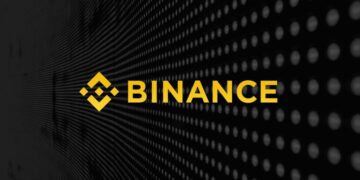On the final day of June, the European Union reached an settlement on easy methods to regulate the crypto-asset business, giving the inexperienced gentle to Markets in Crypto-Belongings (MiCA), the EU’s essential legislative proposal to supervise the business in its 27 member nations. A day earlier, on June 29, lawmakers within the member states of the European Parliament had already handed the Switch of Funds Regulation (ToFR), which imposes compliance requirements on crypto property to crack down on cash laundering dangers within the sector.
Given this state of affairs, immediately we are going to additional discover these two legislations that, attributable to their broad scope, can function a parameter for the opposite Monetary Motion Process Drive (FATF) members outdoors of the 27 nations of the EU. Because it’s at all times good to know not solely the outcomes but additionally the occasions that led us to the present second, let’s return a couple of years.
The relation between the FATF and the newly enacted EU laws
The Monetary Motion Process Drive is a worldwide intergovernmental group. Its members embrace most main nation-states and the EU. The FATF is just not a democratically elected physique; it’s made up of country-appointed representatives. These representatives work to develop suggestions (tips) on how nations ought to formulate Anti-Cash Laundering and different monetary watchdog insurance policies. Though these so-called suggestions are non-binding, if a member nation refuses to implement them, there may be critical diplomatic and monetary penalties.

Alongside these strains, the FATF launched its first tips on crypto property in a doc printed in 2015, the identical 12 months when nations like Brazil began debating the primary payments on cryptocurrencies. This primary doc from 2015, which mirrored the prevailing insurance policies of the USA regulator the Monetary Crimes Enforcement Community, was reassessed in 2019, and on October 28, 2021, a brand new doc titled “Up to date Steerage for a risk-based strategy to digital property and VASPs” got here out containing the present FATF tips on digital property.
Associated: FATF contains DeFi in steerage for crypto service suppliers
This is likely one of the the explanation why the EU, the U.S. and different FATF members are working exhausting to control the crypto market, along with the already recognized causes corresponding to shopper safety, and so on.
If we glance, for instance, on the 29 of 98 jurisdictions whose parliaments have already legislated on the “journey rule,” all have adopted the FATF’s suggestions to make sure that service suppliers involving crypto property confirm and report who their clients are to the financial authorities.
The European digital monetary bundle
MiCA is likely one of the legislative proposals developed inside the framework of the digital finance bundle launched by the European Fee in 2020. This digital finance bundle has as its essential goal to facilitate the competitiveness and innovation of the monetary sector within the European Union, to determine Europe as a worldwide customary setter and to supply shopper safety for digital finance and fashionable funds.
On this context, two legislative proposals — the DLT Pilot Regime and the Markets in Crypto- Belongings proposal — had been the primary tangible actions undertaken inside the framework of the European digital finance bundle. In September 2020, the proposals had been adopted by the European Fee, as was the Switch of Funds Regulation.
Associated: European ‘MiCA’ regulation on digital property
Such legislative initiatives had been created consistent with the Capital Markets Union, a 2014 initiative that goals to determine a single capital market throughout the EU in an effort to cut back boundaries to macroeconomic advantages. It ought to be famous that every proposal is simply a draft invoice that, to return into pressure, must be thought-about by the 27 member nations of the European Parliament and the Council of the EU.
Because of this, on June 29 and June 30, two “interim” agreements on ToFR and MiCA, respectively, had been signed by the political negotiation groups of the European Parliament and the Council of the European Union. Such agreements are nonetheless provisional, as they should go by means of the EU’s Financial and Financial Affairs Committee, adopted by a plenary vote, earlier than they will enter into pressure.
So, let’s check out the primary provisions agreed to by the political negotiation groups of the European Parliament and the European Council for the crypto market (cryptocurrencies and asset-backed tokens corresponding to stablecoins).
Predominant “authorised” subjects of the Switch of Funds Regulation
On June 29, the political negotiation groups of the European Parliament and the Council of the European Union agreed on provisions of the ToFR on the European continent, also referred to as the “journey guidelines.” Such guidelines detailed particular necessities for crypto asset transfers to be noticed between suppliers corresponding to exchanges, unhosted wallets (corresponding to Ledger and Trezor) and self-hosted wallets (corresponding to MetaMask), filling a significant hole within the current European legislative framework on cash laundering.
Associated: Authorities need to shut the hole on unhosted wallets
Amongst what has been authorised, following the FATF suggestion line, the primary subjects are as follows: 1) All crypto asset transfers should be linked to an actual identification, no matter worth (zero-threshold traceability); 2) service suppliers involving crypto property — which the European laws name Digital Asset Service Suppliers, or VASPs — should gather details about the issuer and the beneficiary of the transfers they execute; 3) all corporations offering crypto-related providers in any EU member state will turn into obliged entities beneath the prevailing AML directive; 4) unhosted wallets (i.e., wallets not held in custody by a 3rd celebration) will probably be impacted by the foundations as a result of VASPs will probably be required to gather and retailer details about their clients’ transfers; 5) enhanced compliance measures may even apply when EU crypto asset service suppliers work together with non-EU entities; 6) concerning information safety, journey guidelines information will probably be topic to the strong necessities of the European information safety legislation, Common Knowledge Safety Regulation (GDPR); 7) the European Knowledge Safety Board (EDPB) will probably be answerable for defining the technical specs of how GDPR necessities ought to be utilized to the transmission of journey guidelines information for cryptographic transfers; 8) middleman VASPs that carry out a switch on behalf of one other VASP will probably be included within the scope and will probably be required to gather and transmit the details about the preliminary originator and the beneficiary alongside the chain.

Right here, you will need to word that European ToFR appears to have absolutely adopted the advice enshrined in FATF Advice 16. That’s, it isn’t sufficient for Digital Asset Service Suppliers to share buyer information with one another. Due diligence have to be carried out on the opposite VASPs with which their clients transact, corresponding to checking whether or not different VASPs carry out Know Your Buyer checks and have an Anti-Cash Laundering/Combating the Financing of Terrorism (AML/CFT) coverage, or facilitate transactions with high-risk counterparties.
Associated: European ‘MiCA’ regulation on digital property: The place can we stand?
As well as, this settlement on the ToFR have to be authorised in parallel by the European Parliament and Council previous to publication within the Official Journal of the EU, and can start no later than 18 months after it enters into pressure — with out having to attend for the continuing reform of the AML and counter terrorism directives.
Predominant “authorised” factors of the Markets in Crypto-Belongings
MiCA is the important thing legislative proposal regulating the crypto sector in Europe, though it isn’t the one one inside the European digital finance bundle. It’s the first regulatory framework for the crypto-active business on a worldwide scale, as its approval imposes guidelines to be adopted by all 27 member nations of the bloc.
Ich bin mir sicher, MiCA ist ein europäischer Erfolg und globaler Standardsetzer. Danke an das Verhandlungsteam @McGuinnessEU /3 pic.twitter.com/bSJh10OY61
— Stefan Berger (@DrStefanBerger) June 30, 2022
As already talked about, negotiators from the EU Council, the Fee and the European Parliament, beneath the French presidency, reached an settlement on the supervision of the Markets in Crypto-Belongings (MiCA) proposal in the course of the June 30 political trialogue.
The important thing factors authorised on this settlement are as follows:
- Each the European Securities and Market Authority (ESMA) and the European Financial institution Authority (EBA) could have intervention powers to ban or prohibit the supply of Digital Asset Service Suppliers, in addition to the advertising and marketing, distribution or sale of crypto property, in case of a menace to investor safety, market integrity or monetary stability.
- ESMA may even have a major coordination function to make sure a constant strategy to the supervision of the most important VASPs with a buyer base above 15 million.
- ESMA will probably be tasked with creating a strategy and sustainability indicators to measure the affect of crypto property on the local weather, in addition to classifying the consensus mechanisms used to concern crypto property, analyzing their power use and incentive buildings. Right here, you will need to word that just lately, the European Parliament’s Committee on Financial and Financial Affairs determined to exclude from the MiCA (by 32 votes to 24) proposed authorized provision that sought to ban, within the 27 EU member nations, the usage of cryptocurrencies powered by the “proof-of-work” algorithm.
- Registration of entities primarily based in third nations, working within the EU with out authorization, will probably be established by ESMA primarily based on info submitted by competent authorities, third nation supervisors or recognized by ESMA. Competent authorities could have far-reaching powers in opposition to listed entities.
- Digital Asset Service Suppliers will probably be topic to strong Anti-Cash Laundering safeguards.
- EU VASPs should be established and have substantive administration within the EU, together with a resident director and registered workplace within the member state the place they apply for authorization. There will probably be strong checks on administration, individuals with qualifying holdings within the VASP or individuals with shut ties. Authorization ought to be refused if AML safeguards usually are not met.
- Exchanges could have legal responsibility for damages or losses precipitated to their clients attributable to hacks or operational failures that they need to have averted. As for cryptocurrencies corresponding to Bitcoin, the brokerage should present a white paper and be accountable for any deceptive info supplied. Right here, you will need to know the distinction between the forms of crypto property. Each cryptocurrencies and tokens are forms of crypto property, and each are used as a option to retailer and transact worth. The primary distinction between them is logical: cryptocurrencies characterize “embedded” or “native” transfers of worth; tokens characterize “customizable” or “programmable” transfers of worth. A cryptocurrency is a “native” digital asset on a given blockchain that represents a financial worth. You can’t program a cryptocurrency; that’s, you can’t change the traits of a cryptocurrency, that are decided in its native blockchain. Tokens, then again, are a customizable/programmable digital asset that runs on a second or third technology blockchain that helps extra superior good contracts corresponding to Ethereum, Tezos, Rostock (RSK) and Solana, amongst others.
- VASPs should segregate shoppers’ property and isolate them. Because of this crypto property won’t be affected within the occasion of a brokerage agency’s insolvency.
- VASPs should give clear warnings to buyers in regards to the threat of volatility and losses, in complete or partly, related to crypto-actives, in addition to adjust to insider buying and selling disclosure guidelines. Insider buying and selling and market manipulation are strictly prohibited.
- Stablecoins have turn into topic to an much more restrictive algorithm: 1) Issuers of stablecoins will probably be required to keep up reserves to cowl all claims and supply a everlasting proper of redemption for holders; 2) the reserves will probably be absolutely protected within the occasion of insolvency, which might have made a distinction in circumstances like Terra.

First launched in 2020, the MiCA proposal went by means of a number of iterations earlier than reaching this level, with some proposed legislative provisions proving extra controversial than others, corresponding to NFTs remaining outdoors the scope however with the ability to be reclassified by supervisors on a case-by-case foundation. That’s, nonfungible tokens have been not noted of the brand new guidelines — though, within the MiCA settlement discussions, it was identified that NFTs could also be introduced into the scope of the MiCA proposal at a later date.
Associated: Are NFTs an animal to be regulated? A European strategy to decentralization, Half 1
In the identical vein, DeFi and crypto lending had been not noted on this MiCA settlement, however a report with doable new legislative proposals should be submitted inside 18 months of its entry into pressure.
As for stablecoins, a ban on them was thought-about. However, in the long run, the understanding remained that banning or absolutely limiting the usage of stablecoins inside the EU wouldn’t be per the objectives set on the EU degree to advertise innovation within the monetary sector.
Last concerns
Shortly after the ToFR and MiCA agreements had been reported, some criticized the ToFR, stating, for instance, that whereas legislators had achieved their half, the authorised origin and recipient identification measures will solely attain central financial institution digital currencies, however not privacy-focused blockchain networks like Monero and Sprint.
Others have argued for the necessity for a harmonized and complete framework just like the MiCA proposal, which brings regulatory readability and limits for business gamers to have the ability to function their companies safely throughout the varied EU member nations.
Do you suppose European policymakers have been in a position to make use of this chance to construct a strong regulatory framework for digital property that promotes accountable innovation and retains unhealthy actors at bay? Or do you suppose that new technique of transactions will emerge to impede the traceability of crypto property with zero threshold? Do you see a necessity for regulation to stop the lack of greater than $1 trillion in worth of the digital asset business in current weeks attributable to the announced threat of algorithmic stablecoins? Or do you consider that market self-regulation is enough?
It’s true that market adjustment is shaking up many scammers and fraudsters. However sadly, it is usually hurting tens of millions of small buyers and their households. No matter positioning, as an business, the crypto sector must be aware of accountability to customers, who can vary from refined buyers and technologists to those that know little about complicated monetary devices.
This text doesn’t include funding recommendation or suggestions. Each funding and buying and selling transfer includes threat, and readers ought to conduct their very own analysis when making a choice.
The views, ideas and opinions expressed listed below are the creator’s alone and don’t essentially replicate or characterize the views and opinions of Cointelegraph.












![Why Ethereum [ETH] address outflows may be headed for DeFi](https://cryptonoiz.com/wp-content/uploads/2023/03/AMBCrypto_An_image_of_a_stylized_Ethereum_logo_with_arrows_poin_22f2aeff-c7bb-4c7d-aec7-547a37a35e82-1-1000x600-360x180.jpg)


























![Why Ethereum [ETH] address outflows may be headed for DeFi](https://cryptonoiz.com/wp-content/uploads/2023/03/AMBCrypto_An_image_of_a_stylized_Ethereum_logo_with_arrows_poin_22f2aeff-c7bb-4c7d-aec7-547a37a35e82-1-1000x600-350x250.jpg)


